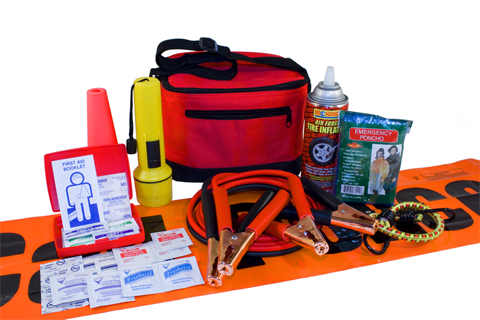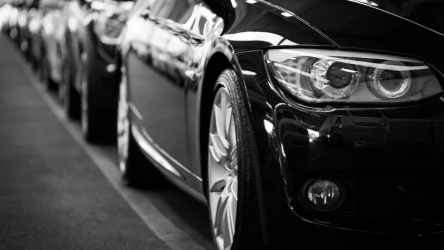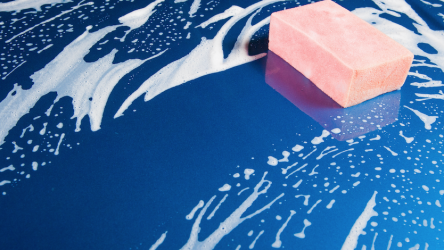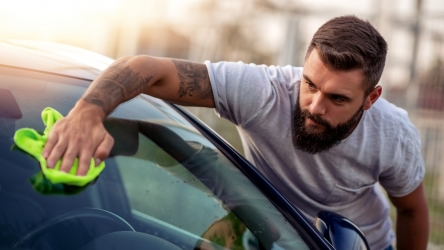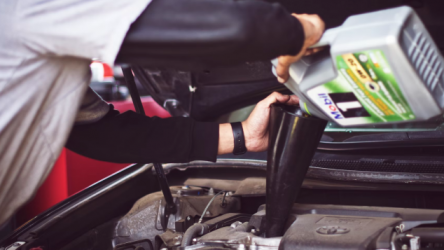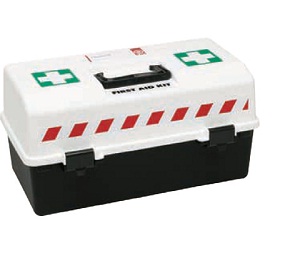
You never expect it to happen to you: an accident, a breakdown on the side of the road, or an emergency that leaves you stranded in the middle of nowhere. The thing about an emergency or an accident is that you never know when it will happen. These things are, by definition, unpredictable. But that doesn’t mean you can’t be prepared.
What you should Carry
According to BrokerLink, a large Canadian auto insurance broker, having certain “emergency” items with you in your car at all times can help keep an unfortunate incident from becoming a catastrophic one. If you’re on trip then, A few things you should consider keeping in your car include:
- a basic first aid kit
- a tire repair kit and pump
- a disposable camera
- a small tool kit
- emergency road flares
- a towel, warning triangles or cones
- a pair of work gloves
- a fire extinguisher
- some type of nonperishable food
- hand wipes
- a flashlight
- bottled water
- booster cables
- a thermal blanket
All of these things are pretty easy to pick up between a grocery store, an auto parts store, and a short trip to a hardware store. Storing the items is easy too. Just get a nice backpack or duffel bag and stash the items in the trunk. If you want to secure them so they’re not sloshing around back there during your day-to-day travels, use bungee cords or aftermarket trunk nets designed for securing items.
About Food
Food isn’t always the first thing you think about in a basic emergency kit, but it’s a really great idea and turns an emergency kit into a true “survival kit.” Why carry food? Because you never know when you’ll be stranded for several hours. Sure, you won’t starve to death, but your blood sugar could swing really low, making it difficult to concentrate on doing the things you need to do to survive.
Choose non-perishable food items like nuts (i.e. almonds), beef jerky, and dried fruit. These types of foods have a long shelf life, and are calorie-dense. The high fat, protein, and sugar content in these foods will give you enough energy to hold out for up to a day or two (depending on how much food you pack).
Lighting
While you could choose a standard flashlight, the biggest problem you’ll face is batteries. Since you never know when you’ll need to use it, the batteries could be dead long before you ever get a chance to use them. Spare batteries? Again, the problem with constantly keeping spare batteries on hand is that you’re wasting money if you don’t use them, and you can never be sure what the charge is when you do need them. Plus, you don’t know how long you’ll need your flashlight to work.
A better alternative is a Faraday-style flashlight. These lights don’t require any batteries to work. Instead, you simply shake the handle back and forth a few times to move a magnet between a conductive coil which powers the light for several minutes. Other flashlights use a crank, but these can be a bit problematic since you have to keep turning the crank to get power.
Protection
Your biggest challenge might not be the fact that you’re stranded somewhere. It might be wild animals or even other people. If you can carry a gun, do so – it may protect you from people trying to rob you or a wild animal that decides to attack. Hopefully, you’ll never need it, but it’s better to be safe than sorry. Also, make sure you’re carrying high-quality flares, pack reflective reflective clothing, and have a good-quality thermal blanket to keep you warm just in case it’s cold outside.
George Nesler has traversed the highways and byways of Canada all his life. An avid blogger, he likes to share his experiences by posting online.

